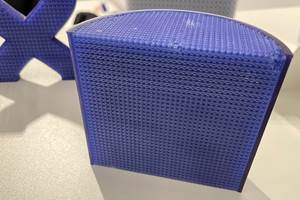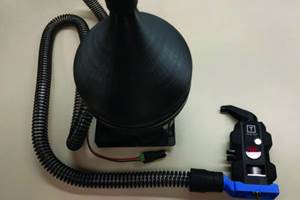5 Ways for a Machine Shop to Use 3D Printing
Additive manufacturing systems are not replacing lathes, but the two processes can work together and complement one another.
At first thought, seeing how additive manufacturing could fit into a CNC machine shop may be difficult. But as these shops begin expanding their capabilities, it is natural for them to consider additive manufacturing. Eric Miller, co-owner and principal of Phoenix Analysis & Design Technologies, Inc. (PADT), recently spoke with Production Machining (sister publication to Additive Manufacturing) about how these two processes could work together.
In the article “Additive Manufacturing in the Turning Shop,” he suggests five ways turning shops could use or encounter additive manufacturing:
- Tooling and fixturing. For polymer 3D printing, Miller says the number one use in the machining space is tooling. Although turning does not require the complicated tooling and fixturing of milling, additive manufacturing can still prove useful. For example, a shop could 3D print a plastic sleeve to protect delicate parts from being damaged by the chuck as they are being turned. The sleeve fits around the part, and both go into the chuck.
- Designs and prototypes. Polymer AM is also well-suited for design and prototyping. For shops that do a lot of up-front prototyping, buying a 3D printer and doing the work in house could be more cost-effective than outsourcing the work. Polymer 3D printing offers a quick turnaround on prototypes, which can be used to determine form, fit and possibly function. “You can make sure the parts are good before you go to machining and make 300 or 3,000 of them,” Miller says. He adds that 3D printing can help speed the design process for design engineers. “Advanced rendering capabilities allow us to visualize work on a computer screen quite well these days, but there’s nothing like holding it in your hand and putting the parts together to see if they fit,” he says.
- Replacing metal castings and weldments. Metal AM can be used instead of a number of different processes for producing parts. For example, injector nozzles that in the past were made of several parts welded together can now be 3D printed as one part. Castings are also being replaced with metal additively manufactured parts. When these parts come out of the 3D printer, they require additional work. “We can’t 3D print really highly accurate surfaces,” Miller says. “We still have to machine those critical surfaces.” Understanding additive manufacturing technology, as well as its strengths and weaknesses will help shops perform these machining operations. Miller sees this as a key area of growth and a big opportunity for shops. For shops that do perform these operations, he adds that it is helpful for them to consider 3D printing as part of their upstream process.
- Producing parts that can’t be machined. Possibly the biggest advantage of additive manufacturing is that it can be used to produce parts that cannot be machined. Aerospace parts and medical implants with complex internal features, for example, can be 3D printed in either metal or plastic. These parts must then be brought into tolerance using machining methods such as turning.
- Repairing parts. According to Miller, hybrid manufacturing systems are mostly used for repair. The additive manufacturing capabilities of these systems are used to add stock to damaged parts, which can then be turned in the same machine to be brought into tolerance.
Related Content
3MF File Format for Additive Manufacturing: More Than Geometry
The file format offers a less data-intensive way of recording part geometry, as well as details about build preparation, material, process and more.
Read MoreVideo: What Is Electron Beam Melting (EBM)?
Electron beam melting is the higher-energy metal 3D printing process offering advantages when it comes to productivity and thermal stresses. Here is an introduction to EBM.
Read MoreImplicit Modeling for Additive Manufacturing
Some software tools now use this modeling strategy as opposed to explicit methods of representing geometry. Here’s how it works, and why it matters for additive manufacturing.
Read MoreNIOSH Publishes 3D Printing Safety Guide for Nonindustrial Settings
NIOSH has published a 3D printing safety guide for small businesses and other additive manufacturing users such as makerspace users, schools, libraries and small businesses.
Read MoreRead Next
Bike Manufacturer Uses Additive Manufacturing to Create Lighter, More Complex, Customized Parts
Titanium bike frame manufacturer Hanglun Technology mixes precision casting with 3D printing to create bikes that offer increased speed and reduced turbulence during long-distance rides, offering a smoother, faster and more efficient cycling experience.
Read MoreCrushable Lattices: The Lightweight Structures That Will Protect an Interplanetary Payload
NASA uses laser powder bed fusion plus chemical etching to create the lattice forms engineered to keep Mars rocks safe during a crash landing on Earth.
Read MorePostprocessing Steps and Costs for Metal 3D Printing
When your metal part is done 3D printing, you just pull it out of the machine and start using it, right? Not exactly.
Read More

















